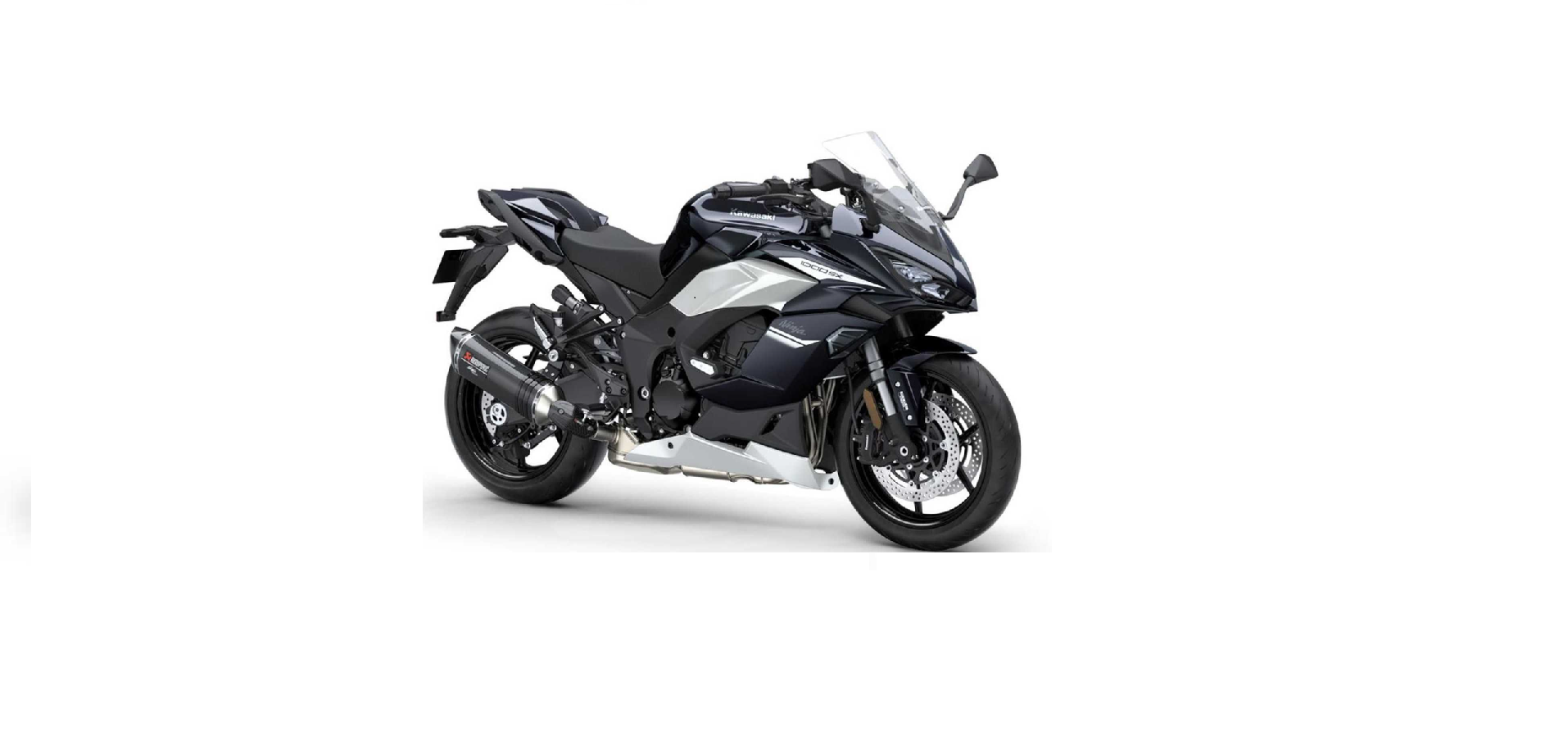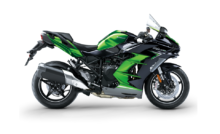

2022 Kawasaki NINJA 1000 SX Power Mode


Power Mode
The power mode determines the engine power output characteristics and has two settings.
Mode F (Full Power):
The highest engine power output is achieved. The rider can feel the full throttle response of the engine.
Mode L (Low Power):
About 75% of the highest engine power output is achieved. The throttle response is milder than F mode.
Electronic Cruise Control System
Cruise control lets the motorcycle maintain a speed of about 30 km/h (19 mph) or more without operating the throttle.
NOTE
- The system does not open at exces- sively low rpm or when in neutral, 1st or 2nd gear.
- At 3rd gear, the cruise control can be used when the vehicle speed exceeds about 30 km/h (19 mph).
- At 6th gear, the maximum settable speed is 143 km/h (89 mph). How- ever, on public roads, keep maxi- mum speed under the posted speed limits.
- For engine protection, the settable speed varies depending on the gear position.
WARNING
Cruise control can be dangerous where you cannot drive safely as a steady speed. Do not use cruise control when riding in heavy or varying traffic, on hills or when negotiating winding roads as this will cause an accident resulting in serious injury or death.
To set the cruise control
Push the cruise control button ( ) on the left handlebar. The system activates and the cruise control indicator goes on.
A. Cruise Control Button
B. Cruise Control Indicator
Push the SET/- button at the desired speed. The system starts the cruise control at the current vehicle speed and the “SET” mark appears on the display screen.
A. SET/- Button
B. “SET” Mark
To adjust the set speed
- To increase the set speed, push the RES/+ button and hold it until the vehicle reaches the desired speed.
- To decrease the set speed, push the SET/- button and hold it until the vehicle reaches the desired speed
A. RESI+ Button
B. SET/- Button
NOTE
- When the RES/+ button is released rapidly, the set speed increases 1.5 km/h (1 mph) from the current speed.
- The system may not accept the repeatedly input of the RES/+ button to prevent an excessive increase in the set speed by misoperation.
- When the SET/- button is released rapidly, the set speed decreases 1.5 km/h (1 mph) from the current speed.
- When pushing the RES/+ or SET/- button, the arrow mark appears on the display screen.
A. Arrow Mark
NOTE
If you want to accelerate temporarily, accelerate with normal throttle application. In this case, to return to the set speed, release the throttle without using the front and rear brakes.
To cancel the set speed
- The set speed is disengaged tem- porarily under the following conditions:
- When pulling the brake lever.
- When stepping on the brake pedal.
- When pulling the clutch lever.
- When shifting gears.
- When closing the throttle grip beyond the closed position.
- The cruise control is stopped under the following conditions and the set speed is erased and it cannot be re- sumed:
- When the vehicle speed drops below 30 km/h (19 mph).
- When the vehicle speed drops 15 km / h (9 mph) from the set speed.
- When pushing the cruise control button (ND).
- The cruise control set indicator dis- appears.
To resume the set speed
- Push the RES/+ button.
- The set speed appears on the display screen until the set speed is reached.
A. Set Speed
NOTE
- When the RES/+ or SET/- button is pushed during resume set speed, the set speed is renewed to the current vehicle speed.
- When the vehicle speed reaches to the set speed, the cruise control set indicator appears again.
To deactivate the cruise control
- Push the cruise control button
- The system deactivates and the cruise control indicator goes off. The set speed also erases.
Kawasaki Quick Shift (KQS)
KQS enables shifting gears up and down without operating the clutch lever. KQS is not designed for shifting automatically. Therefore, you must use the same shift pedal operation as with motorcycles not equipped with KQS.
NOTE
- KQS system does not work while the clutch lever is being pulled.
- KQS system does not work properly below approximately 2 500 r/min (rpm).
- Following any up or down shift, the shift pedal must be fully released before another shift with KQS can be made
Upshifting
During acceleration, KQS system allows you to upshift without operating the clutch and letting off the throttle.
NOTE
The upshifting function of KQS system does not work when the throttle is closed.
Downshifting
During deceleration, KQS system allows you to downshift without operation the clutch.
NOTE
- The downshifting function of KQS system works only when the throttle is closed.
- The downshifting function of KQS system does not work when the engine speed is high (near the red zone on the tachometer). KQS Setting
KQS Setting
KQS mode can be selected from on or off in the menu mode. Refer to the Menu Mode section in the GENERAL INFORMATION chapter.
Kawasaki Cornering Mana ement Function (KCM )
Using feedback from IMU (Inertial Measurement Unit) that gives an even clearer real-time picture of chassis orientation, KCMF monitors engine and chassis parameters throughout the corner – from entry, through the apex, to corner exit – modulating brake force and engine power to facilitate smooth transition from acceleration to braking and back again, and to assist riders intracing their intended line through the corner. This function oversees following con- trol systems: KTRC, KIBS.
- Entry of Corner (KTRC)
- Apex of Corner (KIBS)
- Exit of Corner (KTRC)
Inertial Measurement Unit (IMU)
The IMU measures the acceleration along longitudinal, transverse and vertical axes, plus roll rate and pitch rate. In addition, the yaw rate is calculated using the above data by ECU. These six axes data are used for analysis of the chassis attitude. By using the chassis attitude information, the electronic management technologies equipped with the vehicle can be controlled more smoothly

